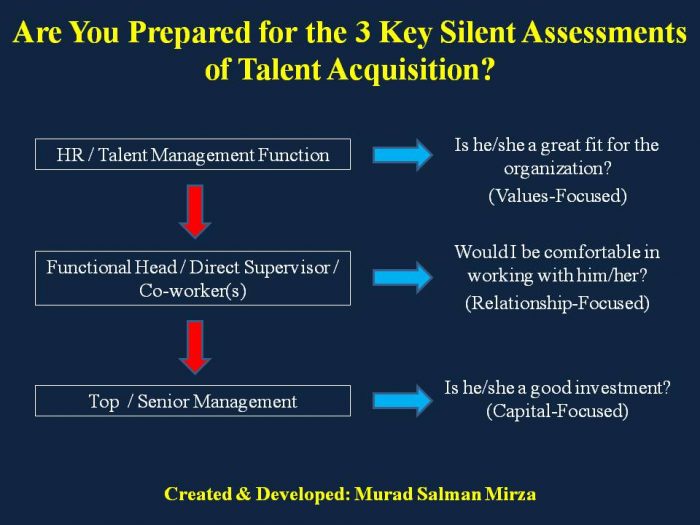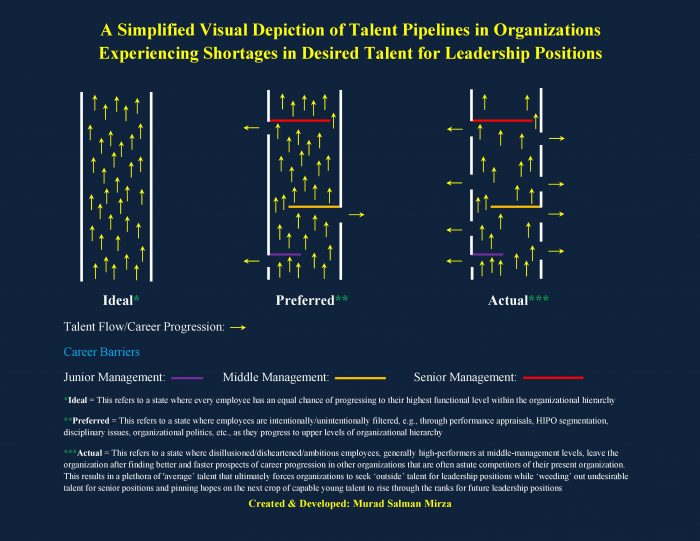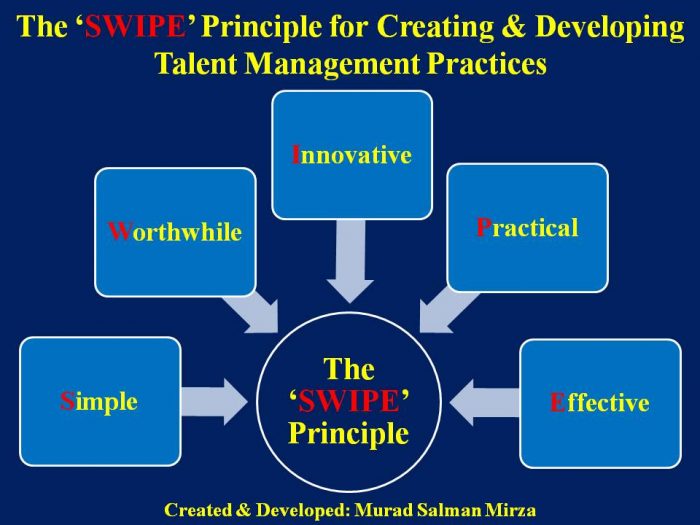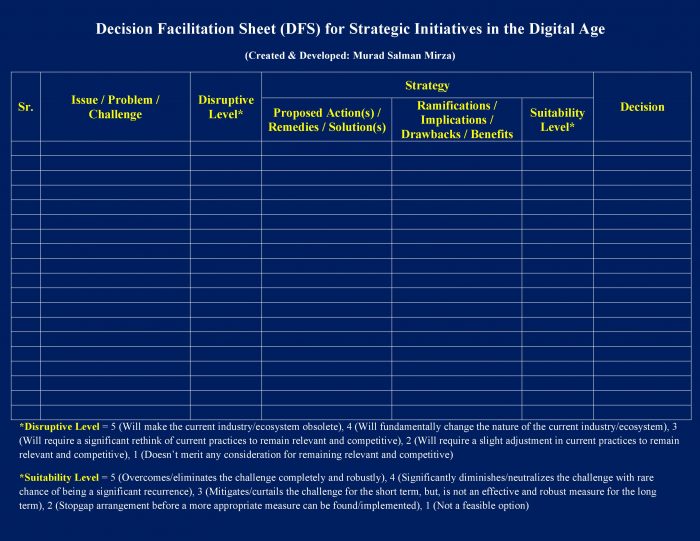There is no greater debt on an organization’s conscience than underutilized talent, therefore, the best way for assuring/ensuring success in the ‘war for talent’ is by taking efficient and effective measures during the ‘peace in talent’. However, inducting and maintaining a capable and motivated multigenerational workforce whose priorities are aligned with the corporate imperatives is becoming increasingly harder each day as AI-enabled entities make significant inroads in the workplace.
The ‘redundancy apprehension’ clouding the minds of hardworking and dedicated professionals is impacting their health and wellbeing at an alarming rate, however, very few organizations display the magnanimity and boldness to take effective measures to manage such ‘internal conflicts’ while embarking upon ‘Employer Branding’ initiatives. The conventional wisdom prevalent throughout the corporate landscape is to take the ‘cover’ of technology as a ‘relationship buffer’ between the ‘discerning’ senior/top management and the frequently ‘overworked and underappreciated’ workforce to avoid getting embroiled in the ‘agonizing’ search for effective solutions to ‘uncomfortable’ questions.
This is evident by the extravagant application of metrics-driven KRAs/KPIs in conjunction with an elaborate and judicious system of associated Rewards & Recognition to mask the desperate efforts for placating simmering discontent at the ‘Supervisor-Supervisee’ level due to a stifling work environment. Such ‘shallow’ measures often result in the career progression of promising talent being held ‘hostage’ by a tired, coaxed, vengeful and/or hurried supervisor’s assessment of their performance to complement another metric on the ‘HR Dashboard’ to inform the senior/top management on how ‘well’ things are working.
Furthermore, more and more of the repetitive/physically demanding/minimally diverse jobs/roles/function are being relegated to ‘smart’ machines while cerebral skills, e.g., innovative thinking, astute strategizing, creative application, team building, network development, etc., steadily gain elevation as the ‘last’ bastion of ‘human relevance’ in the workplace of the Digital Age. Consequently, the following assessments are getting more profound and complex in their probabilistic determination to ‘hit the mark’ in terms of getting the ‘right’ talent and technology is being increasingly leveraged in the respective context:

The sobering reality of shrinking positions within the conventional professions is also forcing the working professionals to confront the agonizing obsolescence of the mantra ‘working for a living’ as they wrestle to stay relevant by contemplating their own interpretation of ‘yearning for a living’ in a ubiquitous AI-driven world. Moreover, the rush to implement ‘Happiness at Work’ initiatives is often at a faster pace than the ‘healing time’ required for effectively resolving ‘Sadness at Work’ issues. Therefore, a significant number of such ‘successes’ lack meaningfulness and robustness to survive simmering cynicism and passive resistance by ‘experienced’ employees weary of ‘trendy’ leadership initiatives.
Additionally, organisations are experiencing frequent blockages in the talent pipelines as the uncertainties of gainful employment in ‘conventional’ professions coupled with the apprehensions of ‘life without work’ is driving the need for ‘postponing’ career moves or ‘delaying’ retirements. This is being exacerbated by the phenomenon of ‘real wages’ spiralling down in relation to inflationary pressures, extension of ‘professional life’ due to longer life spans, regulatory relaxation in pension age, and the desire to remain within the ‘safety net’ of health and well-being benefits (https://lnkd.in/fy6Us-j). Consequently, ‘over-experienced’/‘near-retirement’ professionals are caught in nagging struggles to maintain their ‘relevancy and usefulness’ to prolong their careers and try to garner enough savings for enabling a dignified existence as a senior citizen. Therefore, it becomes imperative for organisations to gauge the effectiveness of their talent management practices and the resulting risks to the ‘Employer Brand’, especially, by elevating the significance of ‘employee departure’ handling. A crucial step in the respective context is the preservation of the sanctity of the ‘employee exit interview’ which is prone to marginalisation in egregious circumstances.
Gone are the days when budding professionals depended upon the paternalistic instincts of their employers to provide them with a viable career path. The capable professional of today is more informed, incisively skilled, and comes with a baggage of knowledge that enables leveraged negotiating targeted to achieve maximum gains within a mutually agreed frame of reference. Consequently, organizations are being pushed to increase the quality of ‘Employee Experience’ in addition to the ‘sweetening the conventional pie’ comprising of compensation and benefits to attract/retain the desired talent. The era of ‘Employee Loyalty’ has been over for quite a while now, however, the concept of ‘Employee Partnership’ that was built on the ashes of organizational allegiance is also under threat. The new arrangement taking root is one of ‘Employee Gratification’, where attractive ‘Total Rewards’ packages are customized to serve as ‘Golden Handcuffs’ on the desired talent as long as the organization sees/perceives a healthy ROI (Return-On-Investment) in terms of retaining them as part of its workforce.
Sagacious employees, on their part, prudently refrain from confusing conformance with performance and seek innovative ways of increasingly the ‘indispensability quotient’ by applying inherent/accumulated skills judiciously and visibly in staying above the mechanistic compulsions, engulfing their peers, for assuring/ensuring sustained career development and progression. This is characterized by having a keen eye on the changing professional landscape due to the evolving ecosystem of their industry and timely pivoting/adapting to board the ‘new train’ of relevance.
One of the major short-sighted mistakes that organisations make is the propensity to implement talent management practices which are designed for ‘risk accommodation’ against ‘talent flight’ instead of ‘risk mitigation’ that caters to ‘talent engagement’. This significantly impacts the ‘psychological contract’ as it shifts from being blindly based on ‘solemn faith’ to being watchfully propped up on ‘validated trust’. Such a lack of ‘trustworthiness’ in the ability of senior/top management to provide a robust ‘bridge’ for aligning personal goals with organisational imperatives results in employees being adamantly unwilling to loosen the ‘stringent’ expectations of the ‘psychological contract’. Consequently, hardening of attitudes occurs and apathy prevails at the cost of organisational harmony. This leads to the following phenomenon:

The plethora of talent management practices deployed across the corporate world to overcome workforce challenges can be encapsulated within the following two main strategies:
Approach A (Indoctrinate, Assimilate & Obligate)
1. Focused on creating and grooming loyal disciples based upon the desired norms of corporate etiquette
2.Inculcates shared values as a robust and binding foundation for a cohesive corporate culture that borders on fanaticism
3.Encourages adherence to well-established and standardised work practices designed around functional optimisation and harmonisation
4.Prefers corporate hierarchy for incentivising improvement initiatives
5.Designs compensation packages as ‘golden handcuffs’ for maximising talent retention, especially, those who are considered ‘flight risks’ due to their particular skill sets and perceived lack of capable replacements
6.Talent treated as an asset prone to depreciation
7.Training, learning and development is discretionary and generally based upon supervisory assessment/prerogative in accordance with the functional requirements
Approach B (Accommodate, Motivate & Facilitate)
1.Geared towards creating an empowering work environment that galvanises the utilisation of a wide bandwidth of apparent/hidden talents
2.Uses shared values as guiding principles for self-discovery of work excellence and strengthening of organisational integration
3.Encourages progressive experiments and ‘timely’ improves work practices for enhancing well-being, mindfulness and productivity of a multi-generational workforce
4.Prefers thought hierarchy for incentivising innovation initiatives
5.Designs compensation packages to enhance the employee experience during employment association for creating ‘alumni ambassadors’ as an astute employer branding measure to attract future talent
6.Talent treated as an investment prone to rich dividends
7.Training, learning and development is mandatory to ensure congruence between individual ambitions and corporate imperatives
8.An astute talent management professional can effectively customise the most appropriate approach for optimising the benefits accrued from the available human capital by adhering to the following principle in congruence with the unique dynamics of an organisation.

This is a strategic undertaking of prime importance since the very future of the corporate entity is at stake in the unforgiving, uncompromising and unrelenting nature of the Digital Age. Consequently, the following tool can be used to make profoundly insightful and prudently sound decisions:

The path to sustainable success, formidable competitiveness, and continued relevance in a rapidly evolving Digital World is paved by ‘Productive Rebels’, rather than, ‘Insular Conformists’. Therefore, progressive corporate entities have to assure/ensure that their talent management practices have the ‘Breathing Space’ for ‘Free Thinkers’ and ‘Trendsetters’ who are imbued with the ‘Change Imperative’ and enrich the ‘Organisational Aptitude’ in unconventional ways that boosts the ‘Core Value of Innovation’ effectively. Organisations that have the humility and astuteness to learn well from their missteps are the ones with the foresight for maximising the probability of success. Will you commit?






